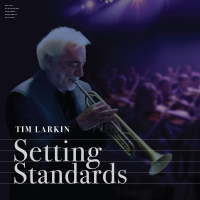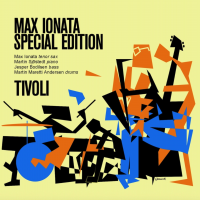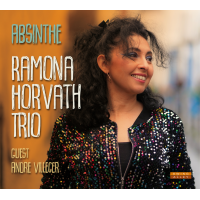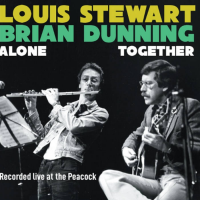Home » Jazz Articles » Album Review » John Coltrane: John Coltrane: The Prestige Recordings
John Coltrane: John Coltrane: The Prestige Recordings
 John Coltrane: The Prestige Recordings chronicles the first great segment of the master's career. The sixteen discs in this mammoth set were all recorded between 1956 and 1958, when Coltrane was a member of Miles Davis' and then Thelonious Monk's ensembles. It's not the Complete Prestige Recordings because it doesn't include material Coltrane recorded with Davis, which is available in the Prestige Davis box. Nevertheless, it's a feast of great music from an underrated and lesser-known period in Coltrane's musical evolution. Fans of celebrated recordings like Giant Steps and My Favorite Things will find a great deal to love here, especially if they find some of Coltrane's later moves hard to understand and harder to listen to.
John Coltrane: The Prestige Recordings chronicles the first great segment of the master's career. The sixteen discs in this mammoth set were all recorded between 1956 and 1958, when Coltrane was a member of Miles Davis' and then Thelonious Monk's ensembles. It's not the Complete Prestige Recordings because it doesn't include material Coltrane recorded with Davis, which is available in the Prestige Davis box. Nevertheless, it's a feast of great music from an underrated and lesser-known period in Coltrane's musical evolution. Fans of celebrated recordings like Giant Steps and My Favorite Things will find a great deal to love here, especially if they find some of Coltrane's later moves hard to understand and harder to listen to.The set includes both material Coltrane recorded as a leader and as a sideman. There are innumerable gems here, mostly overlooked, including Soultrane, an album Coltrane named in a 1960 interview as his favorite along with his Blue Note recording, Blue Train. One thing Coltrane lovers will not find much in abundance will be Trane's own compositions, owing to Prestige's confiscatory royalty policy; however, his first record as a leader, Coltrane (not to be confused with the later Impulse recording of the same name), contains some tantalizing hints of what was to come: "Straight Street" and "Chronic Blues."
But whether or not he composed these tunes, his playing is superlative throughout. The albums he recorded with other tenor saxophonists, especially Tenor Conclave (with Zoot Sims, Al Cohn, and Hank Mobley) and Interplay for Two Trumpets and Two Tenors (with Bobby Jaspar), are stunning for the comparisons they afford: all of Coltrane's companions are fine players, but the crystalline brilliance and sharpness of Coltrane's tone, and his relentless flow of melodic ideas, make it hard to believe that he's playing the same instrument they're playing. It's the same effect one hears in recordings of Lester Young with the Basie band, or Eric Dolphy with Oliver Nelson: are these guys on the same planet?
Also noteworthy is Dakar, a dark-hued masterpiece Coltrane recorded with two baritone saxophonists, Pepper Adams and Cecil Payne. They set off the sharp edge of his tenor such that it sounds all the brighter, and the songs, by Adams, Teddy Charles, and the incomparable Mal Waldron, are catchy enough to delight on first hearing and profound enough to reward repeated listenings. There are a number of recordings with pianist Red Garland in this package; not to be missed is the marathon session of November 15, 1957, which yielded two Coltrane solos that rank with any that he recorded: "Soul Junction" and "All Morning Long." There's also a rare chance to hear Trane play alto (backing Gene Ammons on tenor), although the alto (which he had played in the Forties) didn't make the revolutionary difference to him that the soprano soon would. He sounds pretty much the same, if higher-pitched, on alto as he does on tenor.
Listen to Coltrane's sound as it evolves. The session that yielded the Black Pearls album, and those around it, are fascinating examples of his "sheets of sound" period, when he was playing with startling rapidity and dizzying loquacity. Although he was much criticized during this period, forty years later he sounds pretty far inside, and fairly glorious as well.
The Prestige Recordings is a tremendous introduction not only to Coltrane, but to jazz of the Fifties and, in terms of influence, far beyond. It's pricey, but worth every penny.
Personnel
John Coltrane
saxophoneAlbum information
Title: John Coltrane: The Prestige Recordings | Year Released: 1998 | Record Label: Prestige Records
Tags
PREVIOUS / NEXT
Support All About Jazz
 All About Jazz has been a pillar of jazz since 1995, championing it as an art form and, more importantly, supporting the musicians who make it. Our enduring commitment has made "AAJ" one of the most culturally important websites of its kind, read by hundreds of thousands of fans, musicians and industry figures every month.
All About Jazz has been a pillar of jazz since 1995, championing it as an art form and, more importantly, supporting the musicians who make it. Our enduring commitment has made "AAJ" one of the most culturally important websites of its kind, read by hundreds of thousands of fans, musicians and industry figures every month.























